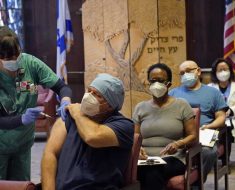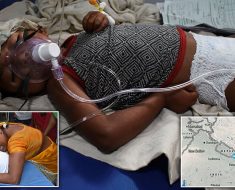
As states and municipalities begin to roll out mass vaccination campaigns, some people have dared to ask: When will it be safe to resume “normal” activities again? For those in most parts of the United States, the risk of COVID-19 infection remains extremely high.
People now have access to better real-time information about infection rates and transmission at the county or city level, but they still need a framework to help them decide what is safe to do. Social distancing and shutting businesses have reduced the number of cases, but there is mounting pressure to reopen businesses and classrooms.
Life is likely to continue in this limbo for some time. A new model co-authored by a Washington University in St. Louis mathematician helps to contend with the uncertainty.
“People need a way to decide whether an activity is worth undertaking,” said John E. McCarthy, the Spencer T. Olin Professor of Mathematics in Arts & Sciences and chair of the Department of Mathematics and Statistics at Washington University.
“We provide a model to estimate the relative infection risks of different activities,” he said. “That information can allow decision-makers in industry and government to rank activities according to their relative risk of infection.
“In combination with an understanding of the benefits and costs of those activities, decision-makers can then make informed choices about whether, and if so how, to allow participation in previously forbidden activities.”
McCarthy wrote the model, published Jan. 28 in the journal PLOS ONE, along with Barry D. Dewitt at Carnegie Mellon University, Bob A. Dumas at Omnium LLC and Myles T. McCarthy at the University of Illinois at Urbana-Champaign.
The researchers present several example calculations, analyzing the risks of idealized versions of airplane travel, attending a sporting event, sitting in a classroom, going to a restaurant and attending a religious service.
Crucially, the new model breaks up the component parts of such in-person activities—walking through a turnstile at a stadium, for example, or sitting in one’s seat in the stands—and adds up their contributions to relative risk. This makes the model easy to use and allows the user to quantify the effect of any proposed mitigation strategy.
McCarthy has already been using a version of this formula to help sports franchises to keep the fan experience at stadiums and arenas the safest it can be. In describing this effort, McCarthy said: “We learned pretty quickly two big takeaways: The single most important risk factor in a fan experience is seating; and, with mitigation, the risk in everything else is relatively small.”
In the PLOS ONE paper, the mathematicians describe how the model they share is a good approximation of a more refined model in which assumed infections come from a series of independent risks. A linearity assumption governing several potentially modifiable risk factors—such as duration of the activity, density of participants and infectiousness of the attendees—makes interpreting and using the model straightforward. The researchers argue that it does so without significantly diminishing the reliability of the model.
This type of decision-making tool will be relevant for months or possibly years ahead, even after the COVID-19 vaccines become more widely available.
“Our approach could be modified to account for estimates of the percent vaccinated of the population of potential participants in an activity,” McCarthy said.
Source: Read Full Article





